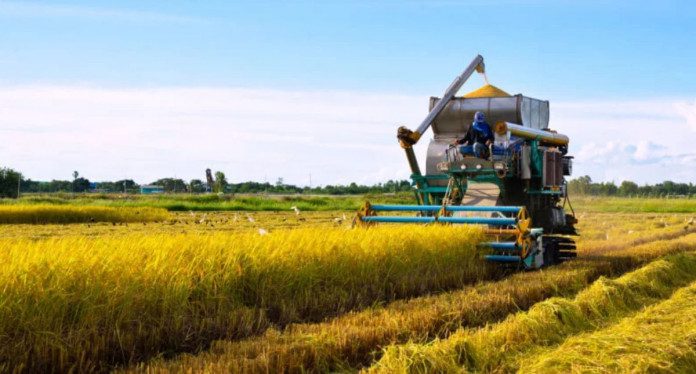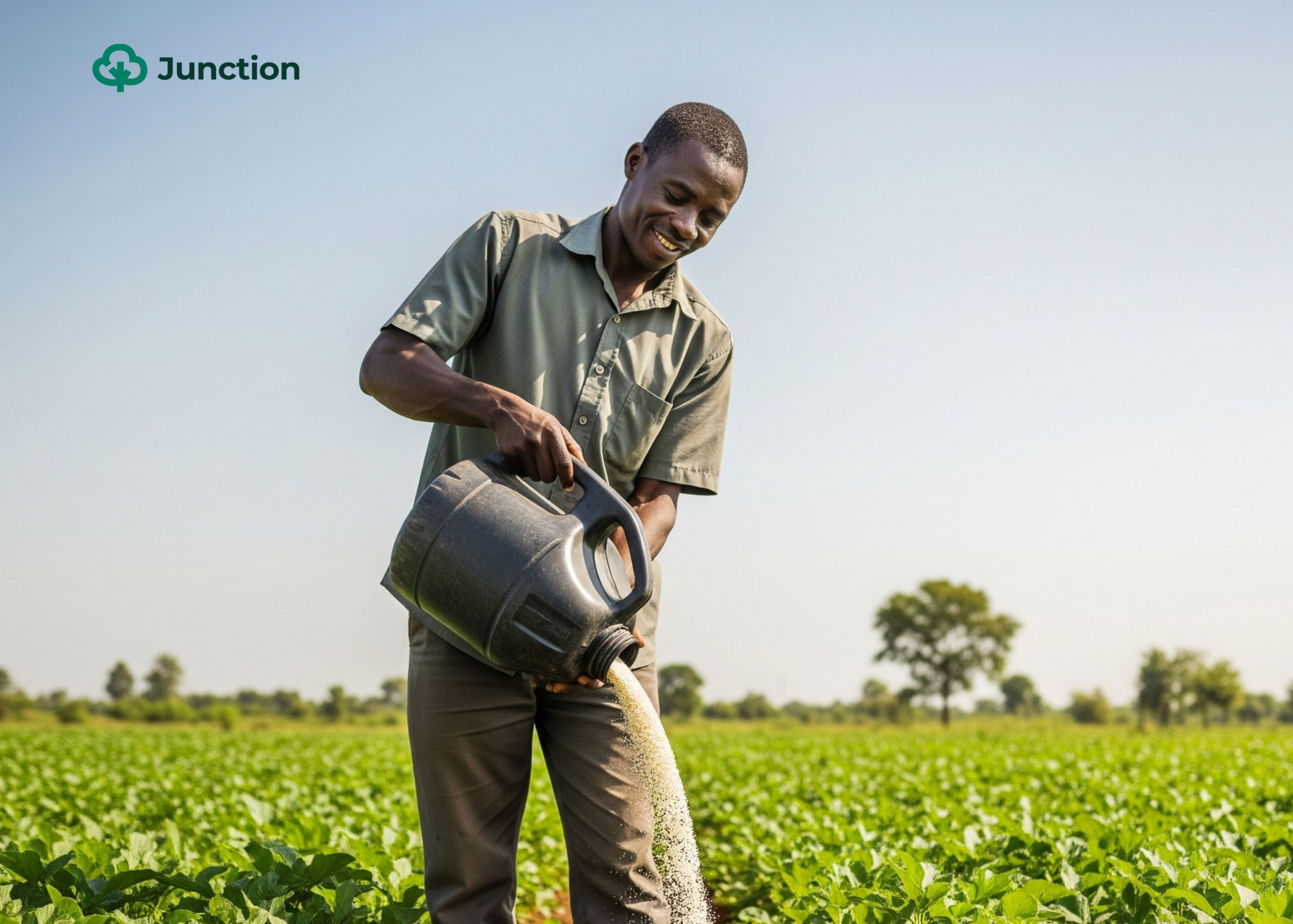News in Brief:
– The significant impact of post-harvest losses on Nigeria’s agriculture, food security, and the economy.
– Strategies for reducing this occurrence include improving infrastructure, enhancing harvesting practices, and promoting value addition.
Post-harvest loss (PHL) has been blamed for upwards of 30% to 50% of all agricultural losses in Nigeria. It is estimated that Nigeria’s annual food production wastes equal 31% of the country’s total land use.
Essentially, PHL affects household food consumption, resulting in high importation of foreign food, as well as shortage of food and raw materials.
The impact on food security
Consequently, this phenomenon has worsened the country’s food security situation, negatively impacting the majority of its over 200 million population. One report says that about 31 million Nigerians are acutely food insecure.
Over time, the federal government, in trying to ameliorate the hardship associated with low agricultural productivity, has had to resort to massive food imports. The shortfalls in food production cost the Nigerian government about $10 billion.
These imports vary from wheat, rice, poultry, fish, food services, and consumer-oriented foods. They are sourced from countries in Europe, Asia, the United States, South America, and South Africa. It has inevitably led to the draining of national resources in mounting expenditures in this regard.
Economic burden
Effectively, about half of all staple food crops like rice, beans, yams, cassava, and a sundry of fruits and vegetables perish before reaching the end consumers.
For example, relevant data indicates that Pepper, (58%) Tomatoes (52%) and Okra(48.25%) top the list of vegetables that experience the highest level of spoilage in its transit from the farm to the table. PHL of grains like rice, range from 5% to 20%, while that of fish is put at 20%.
Yam, a staple food crop in Nigeria, records about 20% to 30% loss after harvest. This is a considerable number seeing as the country leads global yam production statistics by almost 70%.
If this situation were reversed, earnings for farmers, and the country overll, can be quadrupled in this regard. This is especially where efforts to reduce post harvest losses to the barest minimum, are rigorously implemented.
Overall, the estimates of this loss is incalculable in psychological terms, but experts peg this loss at a financial value of around ₦3.5 trillion per annum. This is a staggering percentage of the annual GDP of the country (at ₦52.1 trillion in 2023).
Apart from the lost nutritional value this would have translated to for many, it accounts for a whopping loss from the expected earnings in revenue from agriculture for the country.
Addressing this issue requires concerted effort from relevant stakeholders in the food systems change to remedy the situation. Farmers, traders, transporters, traders to the final consumers bear the brunt of this loss as charges are passed on.
Causes of post-harvest losses
Consequently, a number of symposia held on the matter, has been held in different parts of the country and at different times, in a bid to addressing the issue. This includes the first ever Post-harvest Connect Conference and Exhibition held in Abuja, 2024 organized by the Nigerian Stored Products Research Institute (NSPRI), among others.
Invariably, experts have identified key areas where this problem emanate, including issues of pests and diseases, lack of processing facilities, and inefficient transport systems. They have also proffered solutions to solving same:
Strategies for reducing post-harvest losses
1. Improved storage facilities
One of the primary causes of post-harvest loss is inadequate storage facilities. According to a report by the Federal Ministry of Agriculture, even the ‘storage capacity of 225,000 MT held by the FGN is grossly inadequate.’
The report further goes on to list the high cost of maintaining such a massive storage facility as ‘unsustainable’ in the light of present economic reality. This is also the reality for many storage facility owners in the country who are facing challenges due to the high cost of maintaining such structures in their areas. The result is an underwhelming structure to support an efficient management of food produce, leading to wastage.
To prevent spoilage and decay, farmers and agricultural cooperatives should invest in modern storage structures. These can include silos, warehouses, and cold storage facilities.
For example, grains, can be stored in specially adapted silos, called inert atmosphere silos. Built by the Nigerian Stored Products Research Institute (NSPRI), it aids grain preservation without the use of pesticides. Produce can retain its freshness and quality for upwards of three years after storage. Proper ventilation, temperature control, and pest management are essential to maintain the quality of produce.
2. Timely harvesting and handling
Harvesting produce at the optimal maturity stage and handling it carefully can significantly reduce post-harvest loss. Using appropriate harvesting techniques and avoiding damage during transportation can help preserve the quality of the produce. Additionally, farmers should be trained on proper harvesting and handling practices to minimise losses.
3. Processing and value addition
Processing and value addition can help reduce post-harvest loss by transforming perishable produce into more durable products.
Cassava for example, is a food crop with numerous uses when processed. Apart from food, starch from this tuber can be used in medicine, cosmetics, textile, paper, confectionery. Other uses include beverage, feed, biodegradable materials, adhesives and glues, chemicals, ethanol.
However, the dearth of such processing facilities in the country owing especially to power issues, have reduced the use of the crop to its base as food mostly.
Nonetheless, other popular processing activities such as drying, canning, freezing, and packaging are employed for especially fish. Consequently, converting fresh produce into processed goods, can help increase farmers’ income and reduce the risk of spoilage.
4. Improved transportation infrastructure
Efficient transportation is crucial for delivering produce to markets in a timely manner. Investing in improved transportation infrastructure, such as roads and railways, can help reduce losses due to delays and damage during transit. Additionally, the use of appropriate transportation methods, such as refrigerated trucks, can help preserve the quality of perishable products.
5. Awareness and training
Raising awareness among farmers, agricultural extension workers, and consumers about post-harvest loss and its consequences is essential for implementing effective mitigation strategies. Training programs can help farmers acquire the knowledge and skills needed to prevent and reduce losses. Additionally, promoting sustainable agricultural practices can contribute to reducing the overall impact of post-harvest loss on the Nigerian agricultural sector.
Generally, Nigeria can significantly reduce post-harvest loss and improve the efficiency of its agricultural sector. This can be done by implementing the strategies outlined in this article. This is especially important as addressing this challenge is crucial for ensuring food security, increasing farmers’ incomes, and promoting sustainable economic development.



